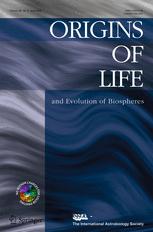 A trio of researchers based in Russia is asking to pull another set of figures and a table from a 2008 paper on modeling ATP formation after an investigation found the fourth researcher – the first author on the paper — “falsified or fabricated” the data they reflect.
A trio of researchers based in Russia is asking to pull another set of figures and a table from a 2008 paper on modeling ATP formation after an investigation found the fourth researcher – the first author on the paper — “falsified or fabricated” the data they reflect.
The paper, in Origins of Life and Evolution of Biospheres, is the second partial retraction from many of the same authors for the same reason. Both journals also issued erratum notices, which read quite similarly. Here’s the latest note:
Three coauthors of this previously published work Taisiya A. Telegina, Tamara A. Lyudnikova and Mikhail S. Kritsky wish to retract Figs. 1, 2, 3, 4 and Table 1 from our paper. The retraction involves the content of the paper claiming to show that illumination of the aqueous solution of ADP and K2HPO4 in presence of flavoproteinoid microspheres leads to formation of ATP. We have no reason to believe that the other results and interpretations presented in our paper are in error. This retraction follows a thorough investigation performed in the Bach Institute of Biochemistry into the scientific misconduct of the fourth of the original authors of this work, Dr. Michael P. Kolesnikov, who is no longer a member of the Institute staff. The investigation found that Dr. Kolesnikov was solely responsible for the falsified or fabricated data presented in the cited figures and table that resulted in the unsubstantiated conclusions presented.
The article, “Abiogenic Photophosphorylation of ADP to ATP Sensitized by Flavoproteinoid Microspheres,” contains five figures and two tables in total, leaving the paper with now only one figure and one table to support its conclusions.
The previous partial retraction in another Springer journal, the Journal of Molecular Evolution, was requested by two of the same authors, including the corresponding author, Mikhail S. Kritsky of the Bach Institute of Biochemistry in Moscow.
Like the Journal of Molecular Evolution, Origins of Life and Evolution of Biospheres is also a member of the Committee on Publication Ethics, which – as we mentioned before – frowns on partial retractions (presumably, even when they are called errata). According to the COPE guidelines:
If only a small part of an article reports flawed data, and especially if this is the result of genuine error, then the problem is best rectified by a correction or erratum.
A subjective call, to be sure, but we certainly wouldn’t consider five out of seven chunks of data “a small part.” The guidelines go on to explain:
Partial retractions are not helpful because they make it difficult for readers to determine the status of the article and which parts may be relied upon.
Alan W. Schwartz, the journal’s editor-in-chief, declined to comment on why the journal issued an erratum instead of a retraction:
I cannot supply any more information than that which is contained in the published Erratum. Perhaps you should contact the authors.
We did, but Kritsky said he had nothing to add, either.
Nor did Springer:
Springer will not be commenting on this further as we believe the Erratum explains why it was a partial retraction.
We have been unable to find contact information for Kolesnikov. The paper has been cited 11 times, according to Thomson Scientific’s Web of Knowledge.
Hat tip: Rolf Degen
Like Retraction Watch? Consider supporting our growth. You can also follow us on Twitter, like us on Facebook, add us to your RSS reader, and sign up on our homepage for an email every time there’s a new post.
If you remove the kidney, stomache, parts of the small intestine and perhaps a limb here and there, can you say that the body is healthy and well? How does a journal/publisher remove essential parts of a paper, but then leave the actual final paper intact?
http://link.springer.com/article/10.1007/s11084-008-9130-9
And still selling for $39.95 / €34.95 / £29.95, I might add.
A question for Springer, about another journal on SpringerLink. Why are readers charged money to access the journal:
http://link.springer.com/journal/11756/69/7/page/1
when a free, open access version exists at DeGruyter?
http://www.degruyter.com/view/j/biolog.2014.69.issue-7/issue-files/biolog.2014.69.issue-7.xml
Another question for Springer, about another journal on SpringerLink (Biologia). Why are readers charged money to access the journal:
http://link.springer.com/journal/11756/69/12/page/1
when a free, open access version exists at DeGruyter?
http://www.degruyter.com/view/j/biolog.2014.69.issue-12/issue-files/biolog.2014.69.issue-12.xml